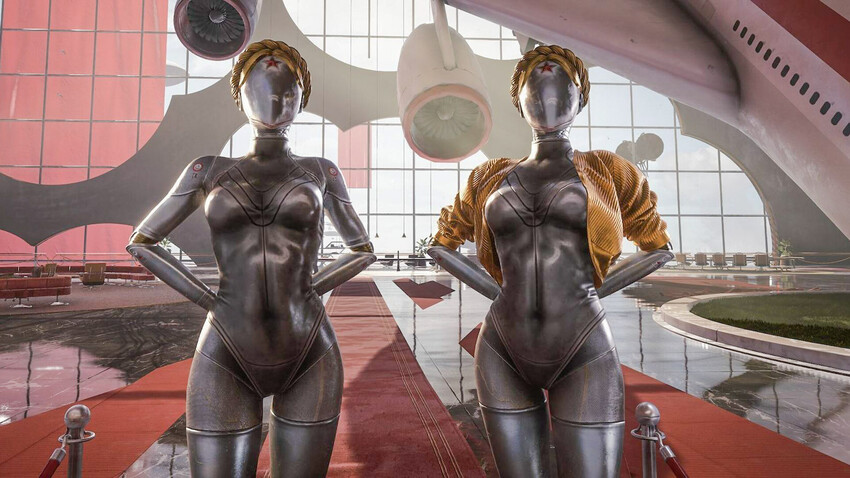
SPOILER ALERT!
‘Atomic Heart’ was released on February 21, 2023. It tells the adventures of Major Nechaev in an alternative USSR set in 1955, where robots have gotten out of control and attacked humans. The video game received a score of 71-76 on Metacritic (depending on the platform).
At the very beginning of the ‘Atomic Heart’ storyline, the disaster has not yet happened and the player gets to immerse into the grandiose utopian city of Chelomei, which demonstrates all the success and achievements of the Soviet power, albeit in an alternative reality. It is in Chelomei that most of the Easter eggs we explain are located.
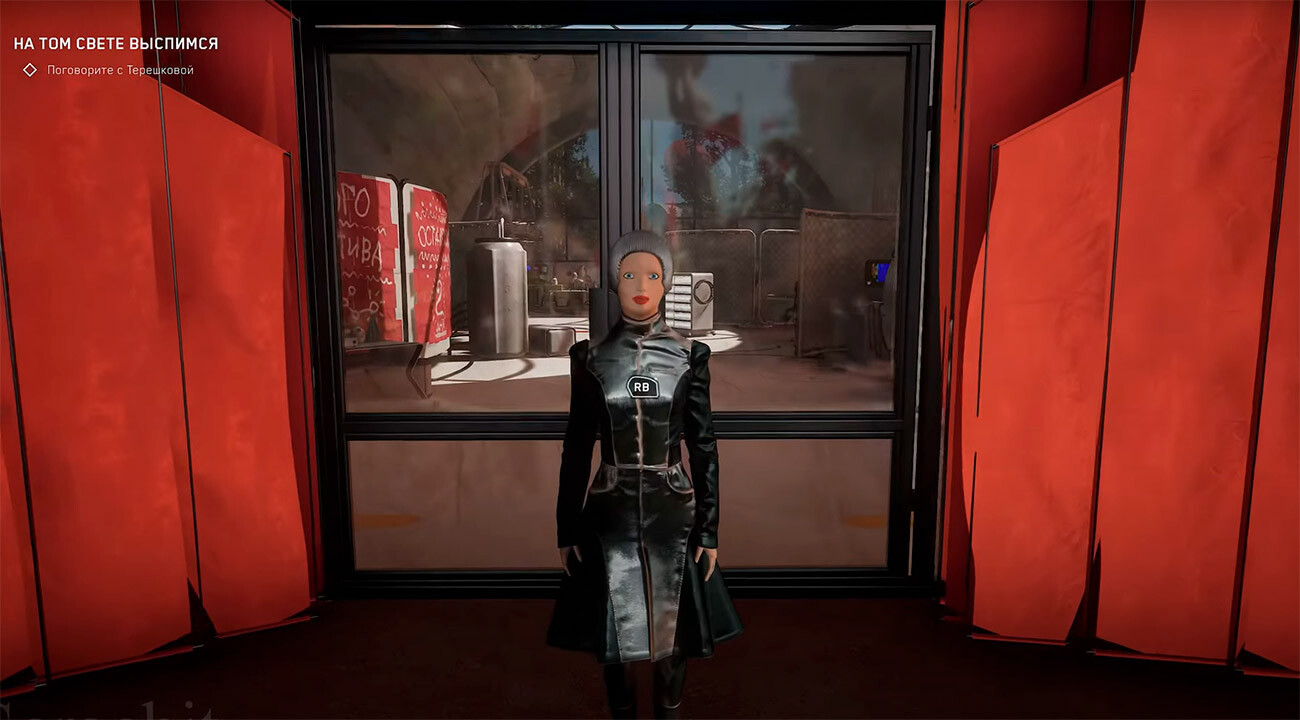
The most obvious reference is that one of the robot models is named ‘Tereshkova’ – of course, in honor of the first woman in space, Valentina Tereshkova (b. 1937). The robot, however, has no portrait resemblance to the “prototype”.
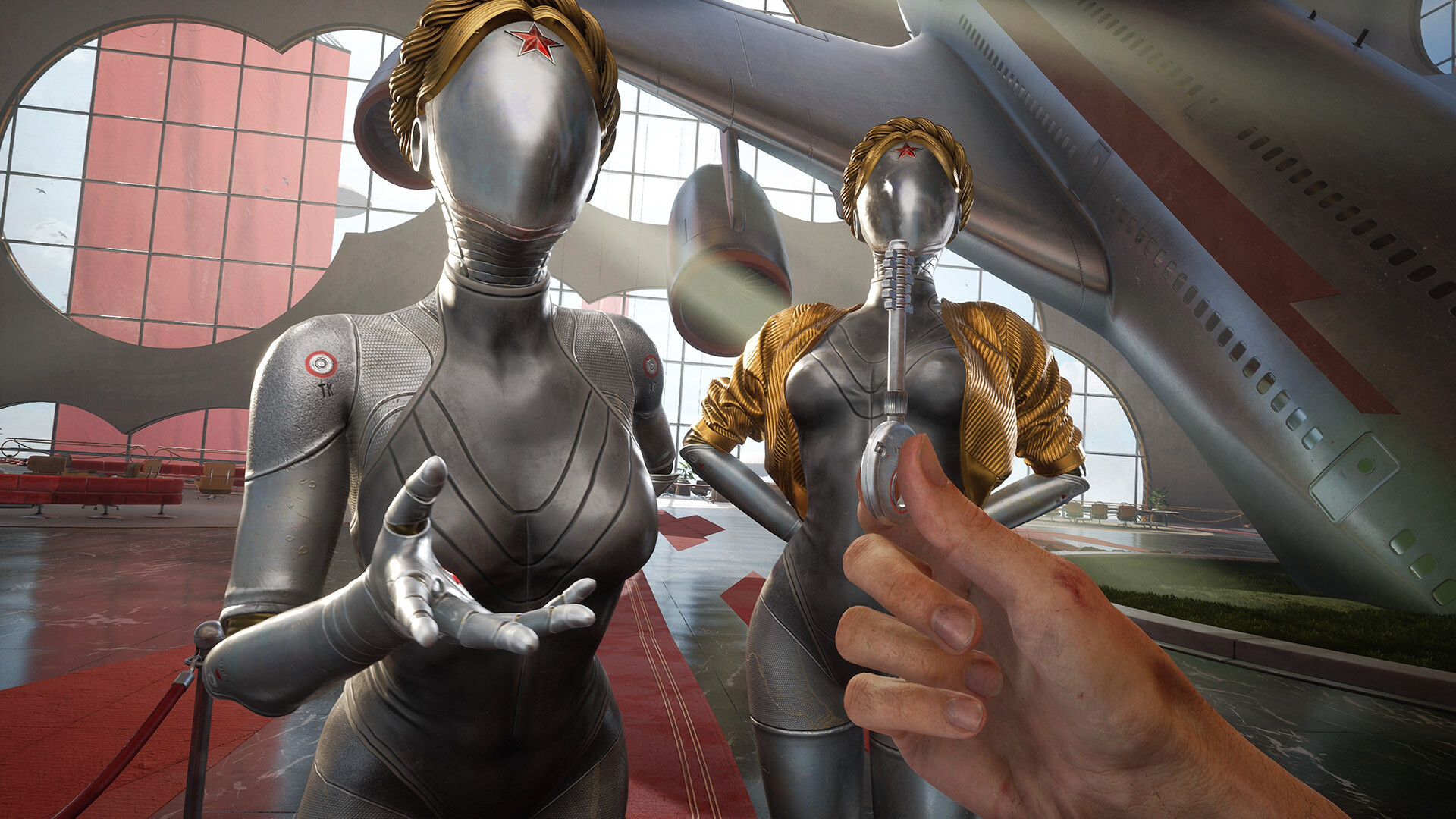
The twin steel-studded ballerinas have already become a visual symbol of ‘Atomic Heart’. The game’s artbook explicitly states – when creating their hair, the creators were inspired by Yulia Tymoshenko’s famous braid. Russian ballerina Anita Pudikova helped create the movements of these characters.
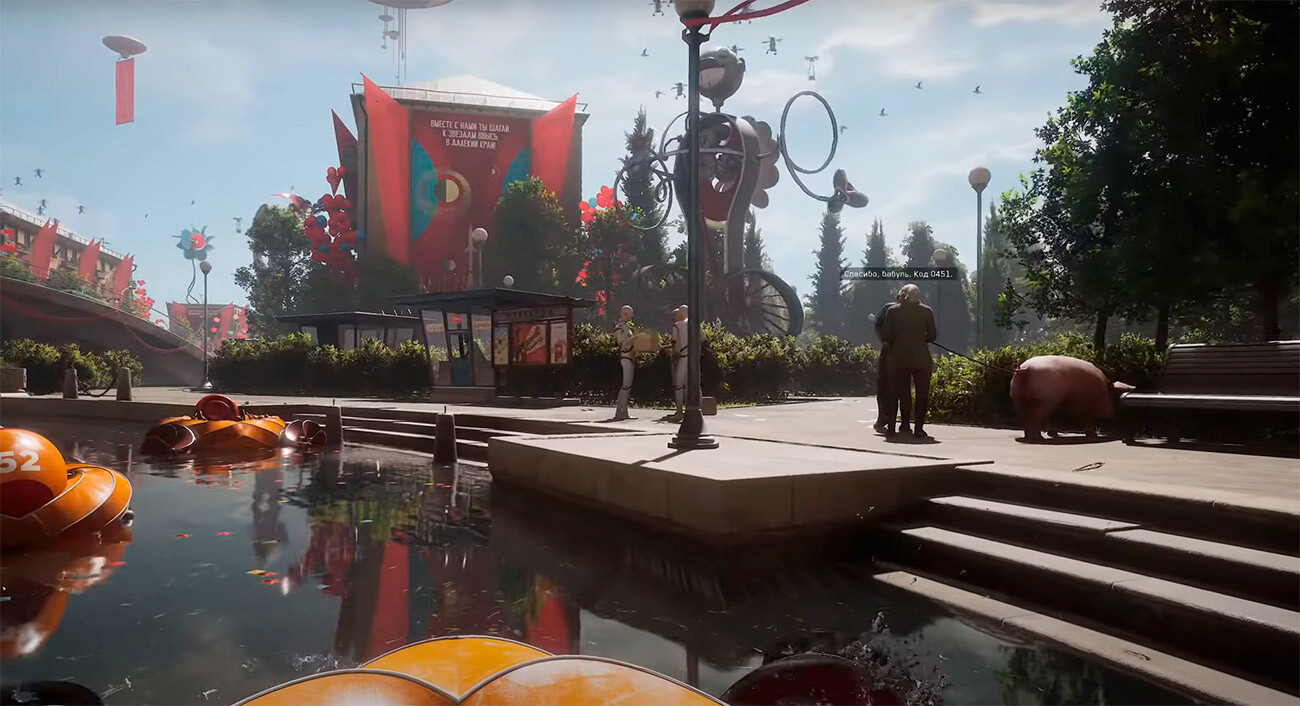
While Major is still floating in a boat on the canal, there is a scene on the shore – a babushka offers a guy to adjust the controls of his malfunctioning group of ‘Vovchik’ robots and asks the guy for a remote control. The man says, “Thanks, babushka. Code 0451.” This, of course, is a reference to Ray Bradbury’s dystopian novel ‘Fahrenheit 451’.
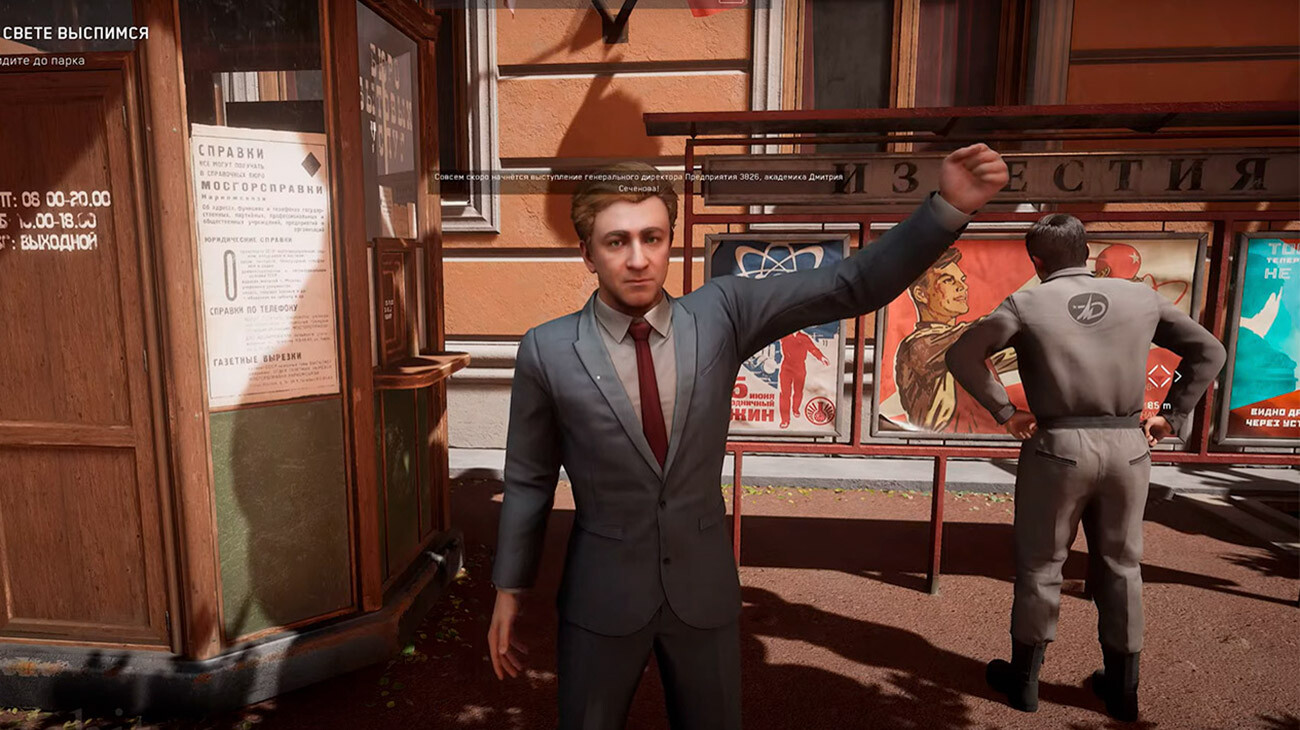
All of the posters in the city are authentic posters from the Soviet Union. Further along in the story, in other locations, they are joined by posters that were drawn specifically for the game (and refer to the game’s reality), but with the Soviet stylistics intact.
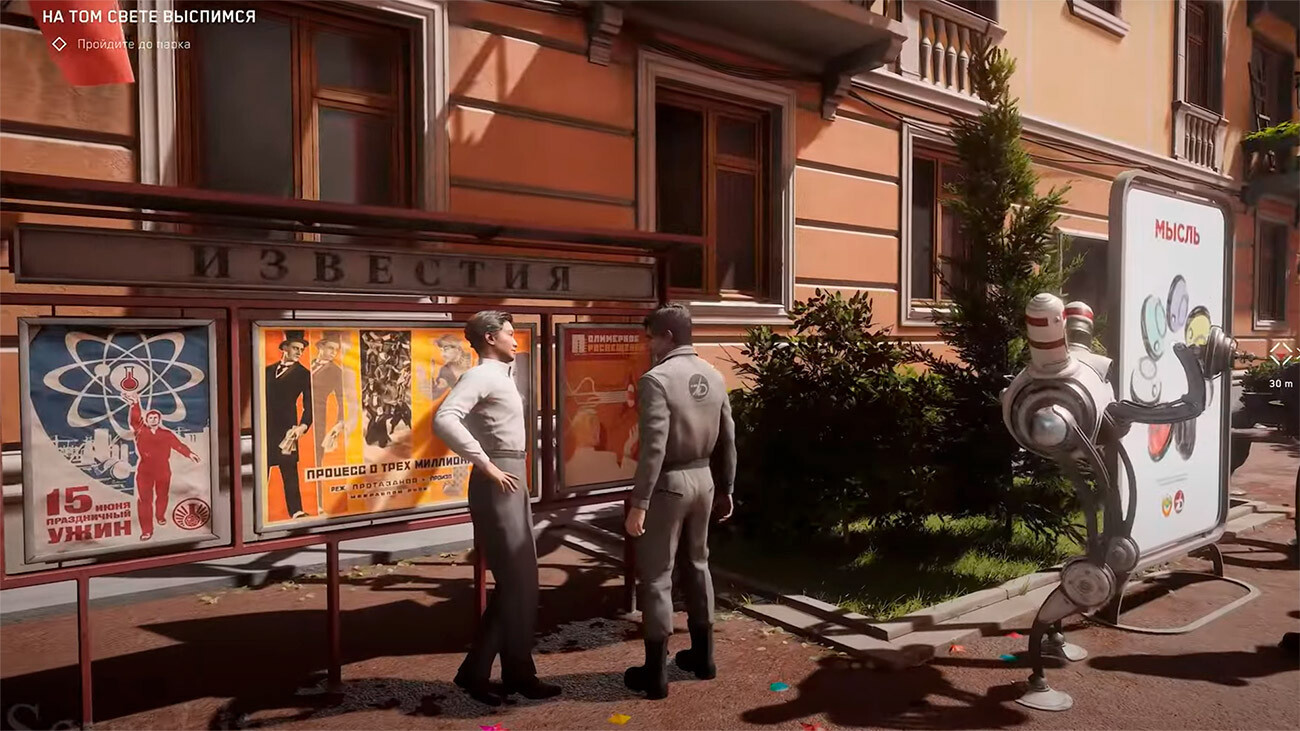
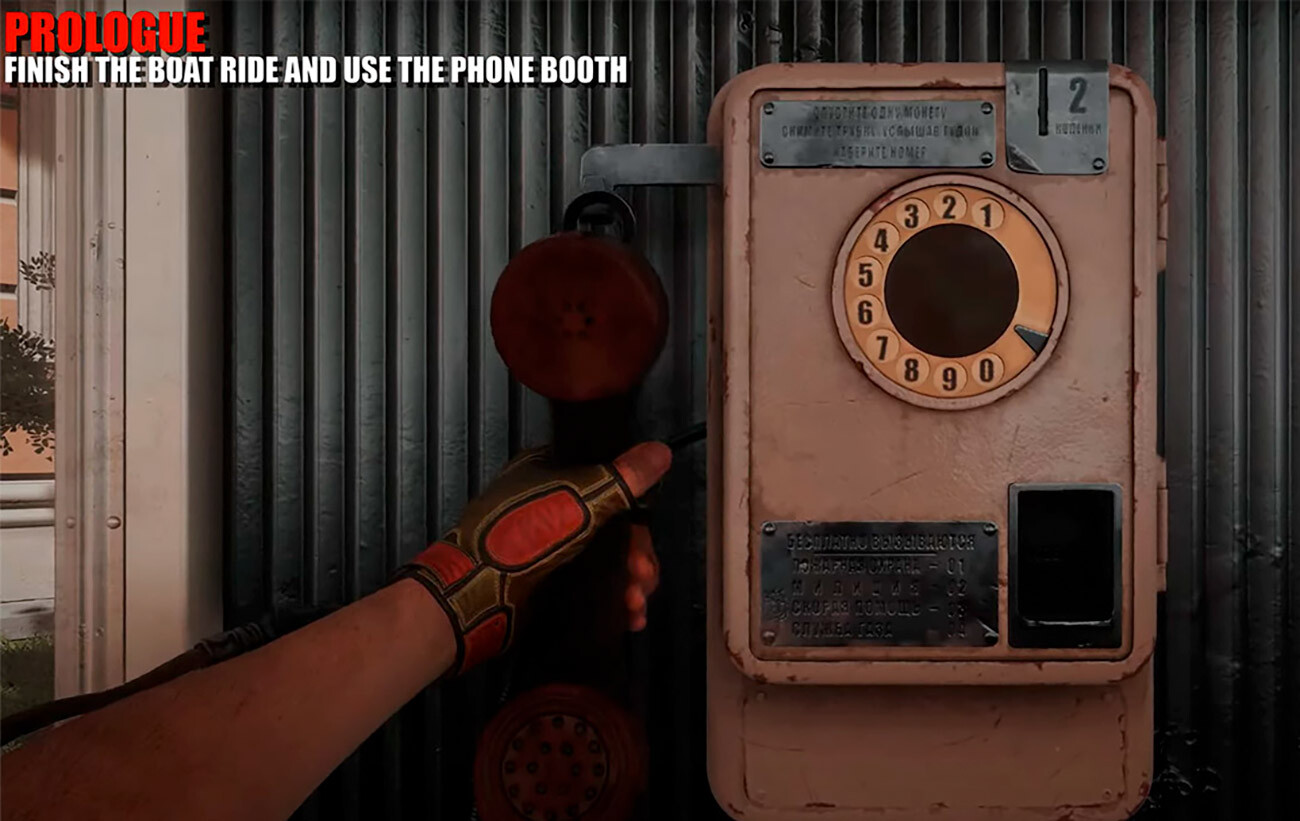
To the right of the ice cream cart is a classic Soviet public pay phone booth with an AMT-69 machine. These were abundant in the late Soviet Union.
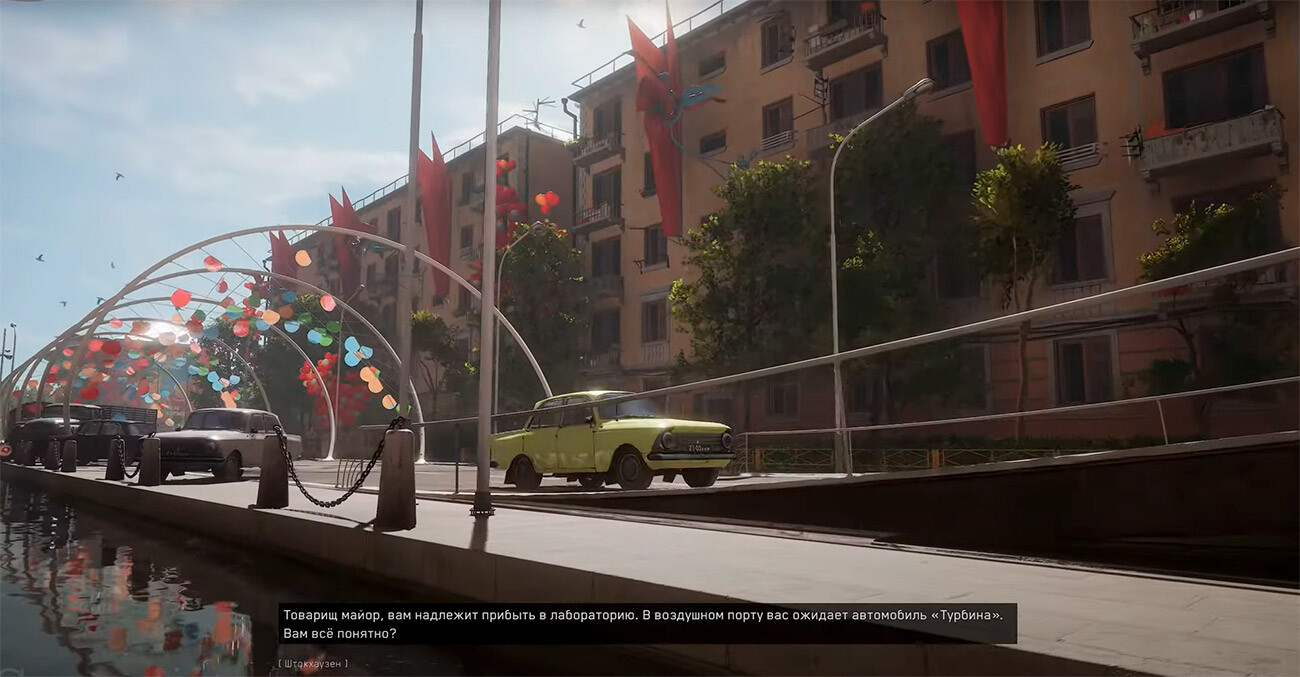
On the opposite bank of the canal you will find Moskvich-412 cars, made from 1967 to 1997 at the plants in Moscow and Izhevsk.
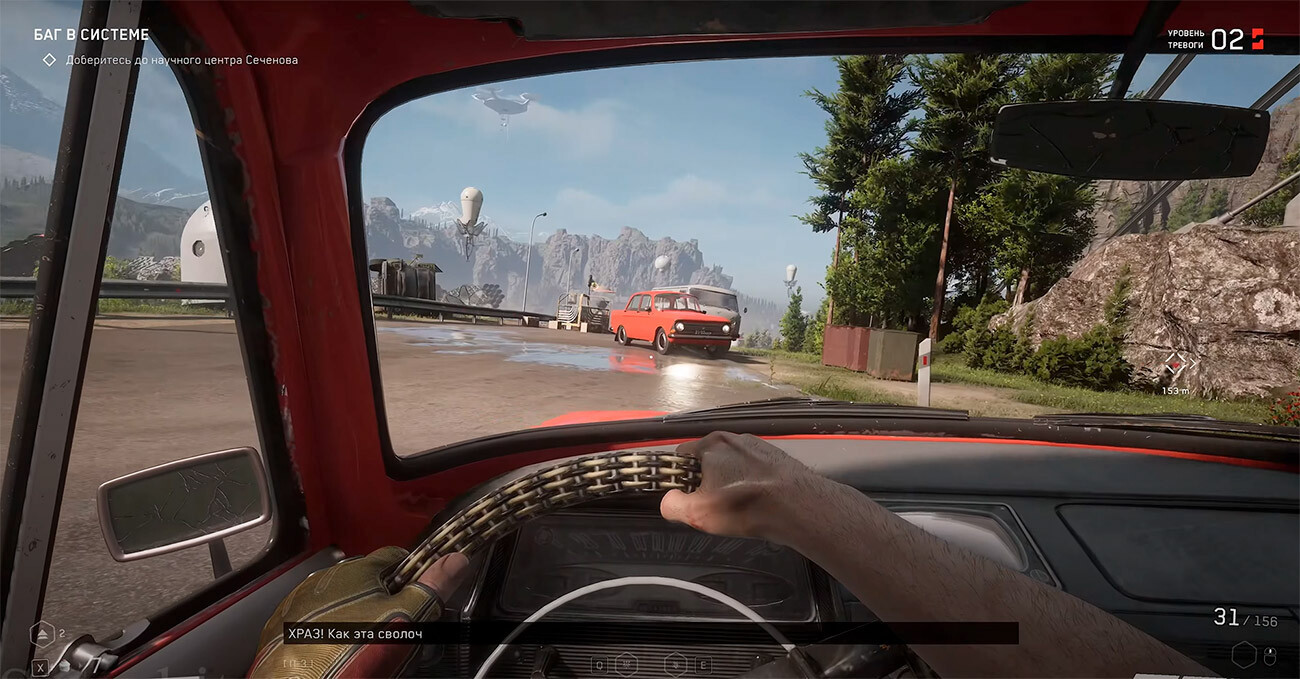
Later, you will be able to drive such a Moskvich – a bright red one, like in the Soviet movie ‘The Diamond Arm’ (1969). And another car from a game called ‘Turbina’ is a copy of the Soviet luxury car ‘Chaika’ – GAZ-13 and GAZ-14.
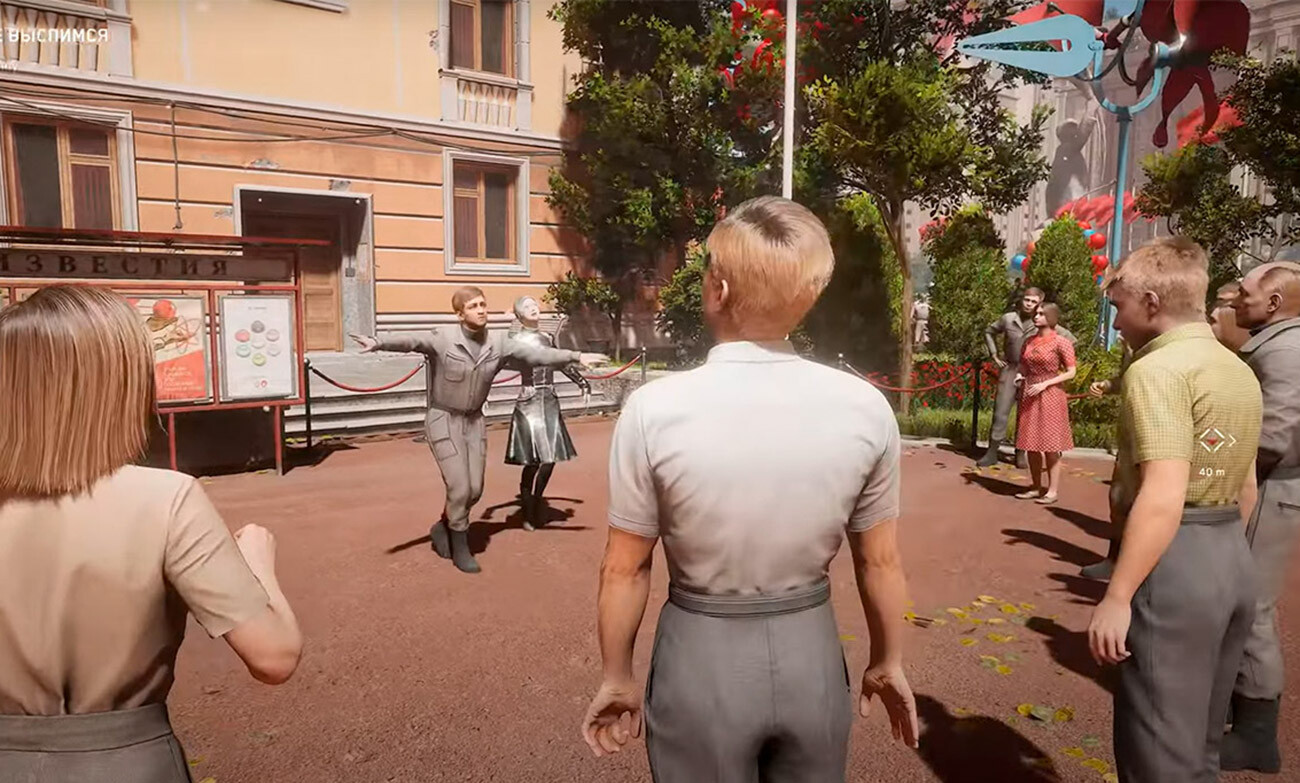
The city of Chelomei is filled with references to Soviet movies – science-fiction and immortal classics. Near the wharf, they dance the lezghinka to the shouts of “Bambarbiya! Kirgudu!” – a quote from the movie ‘Kidnapping, Caucasian Style’ (directed by Leonid Gaidai, 1967). From the same movie is ‘The Song about Bears’, which plays from loudspeakers in the park, performed by Aida Vedischeva.
A woman asks a man in the park if the ‘Moscow-Cassiopeia’ flight will be launched, a reference to a Soviet science fiction movie of the same name (directed by Richard Viktorov, 1974).
The girl who dreams of a robot dog is a reference to another hit Soviet science fiction movie, ‘The Adventures of the Elektronic’ (directed by Konstantin Bromberg, 1979). The nickname she came up with is Rassie, which is the name of the robot dog from that movie.
And they took the emblem of the local cable car – ‘Фуникулер’ – right from the movie ‘Guest from the Future’ (1985).
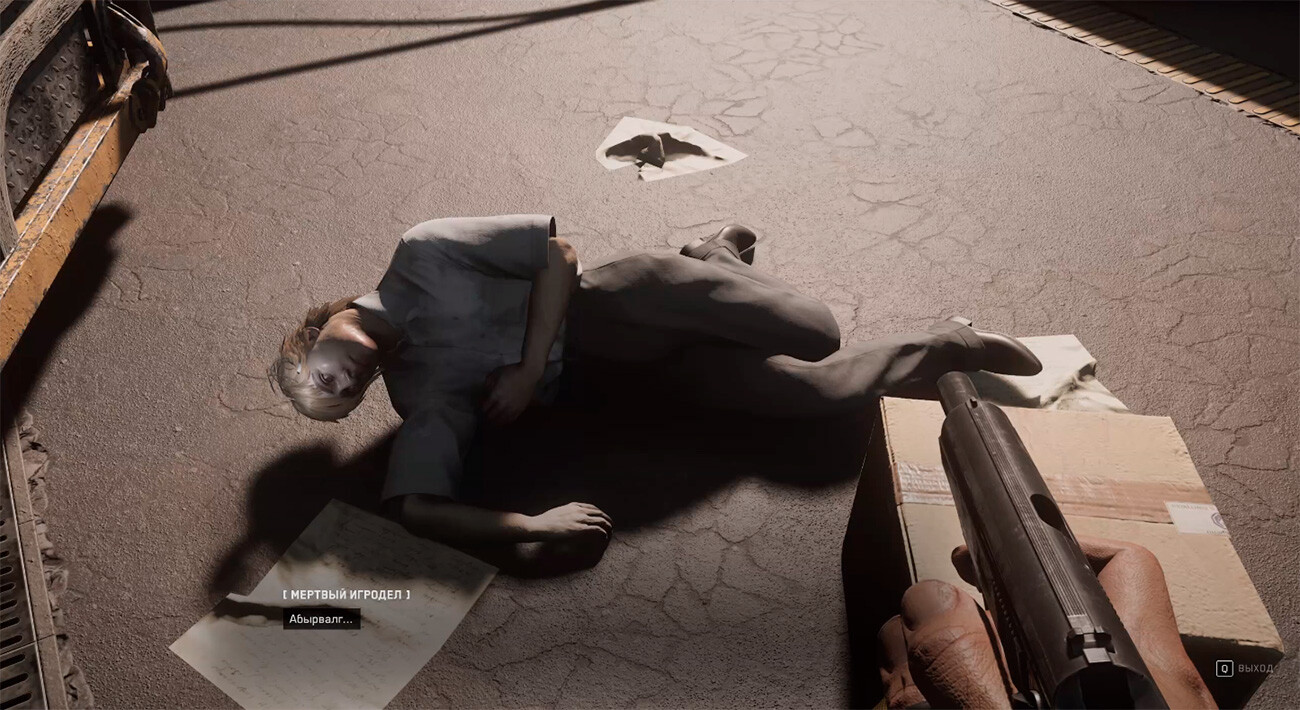
After arriving at ‘VDNKH’, right on the train platform, you can find a body surrounded by scattered pages of paper – ‘Dead Game Designer’. A conversation with him (yes, you can talk to corpses in the game and there is even a “scientific” explanation for this) begins with the word ‘abyrwalg’, the first word uttered by the dog-man Sharikov in Mikhail Bulgakov’s novel ‘Heart of a Dog’ (written in 1925) and the movie adaptation of the same name (released in 1988).
The VDNH exhibit ‘GPD-60’, where ‘GPD’ stands for ‘Professor Dowell’s Head’, a science fiction novel by Russian Soviet science-fiction writer Alexander Belyaev (published in 1925).
One of the audio messages on ‘Shchebetar’ (a literal translation of the Twitter title, by the way) is called ‘Monday Begins on Saturday’ – a reference to the classic novel by the Strugatsky brothers (1965). The protagonist of this novel, Alexander Privalov, is also listed as an employee of Enterprise #3826 in the game.

As a separate point, it is worth mentioning that the televisions on the canal bank at the beginning of the game are showing the Soviet cartoon series ‘Just you wait!’ – or, rather, some excerpts from it. The same TVs are located and can be watched in the recreation rooms elsewhere in the game.
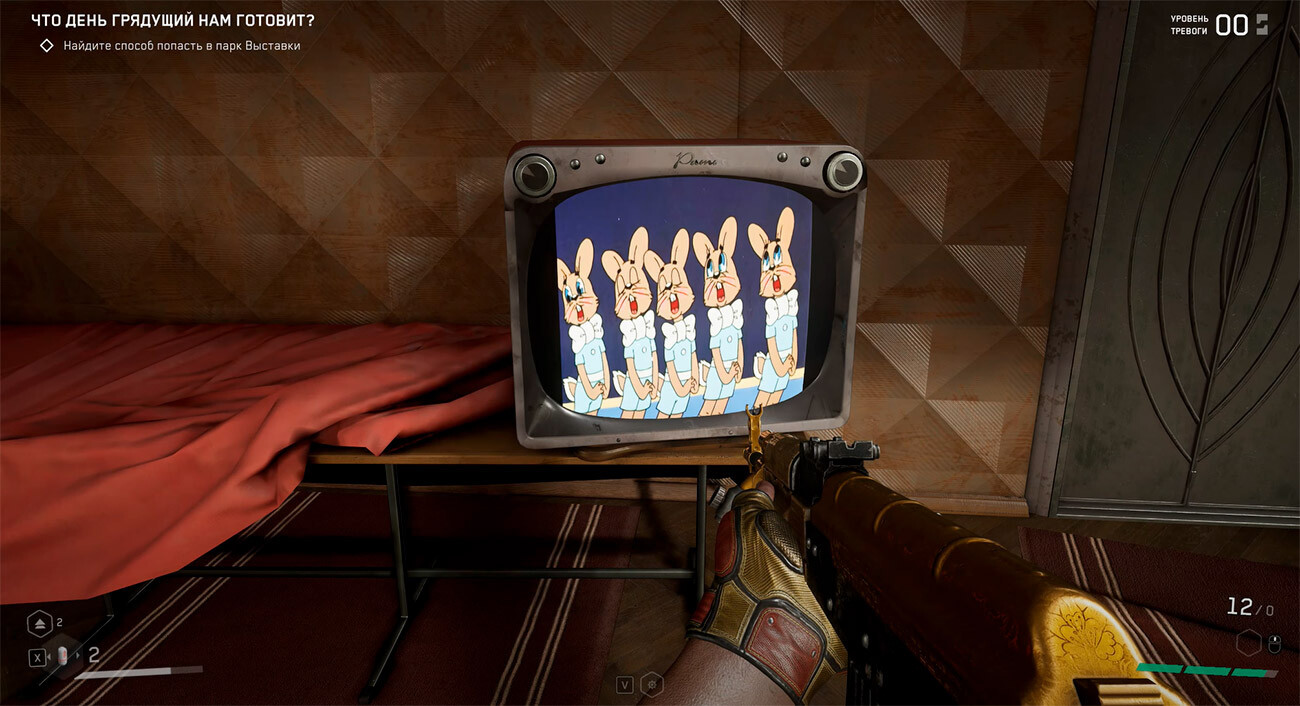
In one of these excerpts, a Scottish gamer with the online username ‘Ravs_’ saw a racist insult. The fragment in question is from the 12th season of ‘Just you wait!’ (1978), where there is a caricature of an indigenous African person with a bow. And it’s drawn in a style reminiscent of the images of African Americans in American cartoons from the 1930s. Nevertheless, the developers had to apologize.

Chelomey city in the game was named after Vladimir Chelomey (1914-1984), a real-life Soviet rocket engine designer. It’s where, according to the story, the design bureau of Enterprise #3826 and the headquarters of its head, Dmitry Sechenov, located in a skyscraper, is located.
Standing on the main square are copies of the sculptures ‘Mother Motherland’ in Volgograd (by sculptor Yevgeny Vuchetich, 1959-1967) and ‘Worker’ from the monument ‘Worker and Kolkhoz Woman’ by Vera Mukhina (1937).
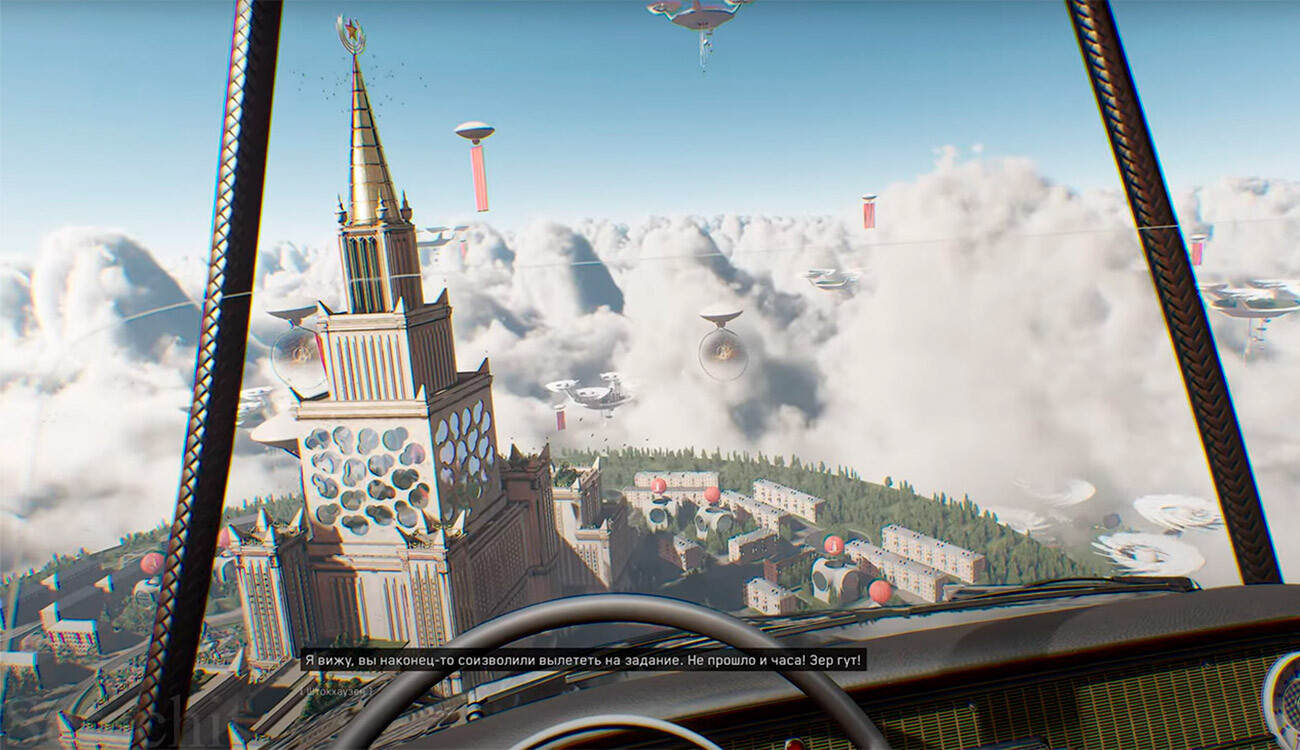
Of course, the buildings that we see in the city are the classic “Stalinist” houses, with a rusticated stone facade on the first floor. The skyscraper is a homage to the Stalinist skyscrapers, while, at the same time, reminiscent of the modern ‘Triumf Palas’ in Moscow, which is Europe's tallest apartment building to date.
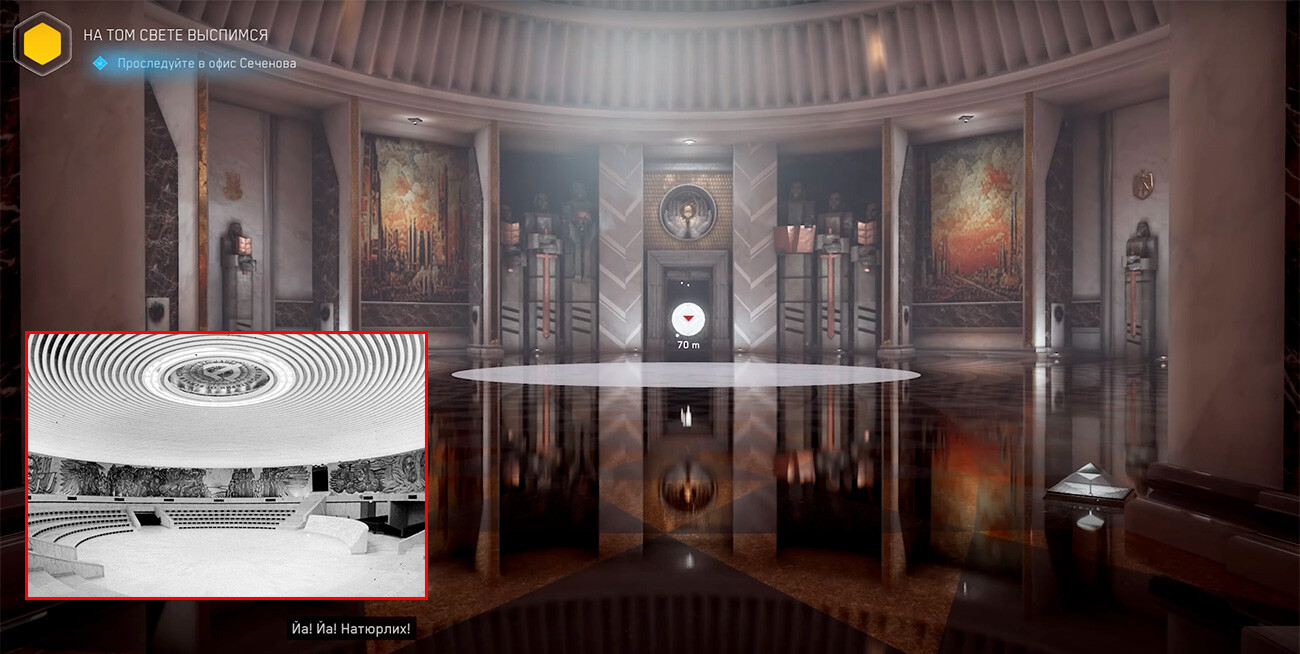
The interior of the Sechenov Skyscraper vs the interior of the monument house ‘Buzluja' in Bulgaria
Mundfish, 2023However, the first, “ceremonial” floor of the Sechenov skyscraper (the hero passes through it twice, when he goes upstairs to get the car keys) is copied from the interior of the monument house ‘Buzluja’ in Bulgaria – under the dome of the building is the same “hammer and sickle” emblem, only, in reality, it is supplemented with the inscription “Proletarians of all countries, unite”.
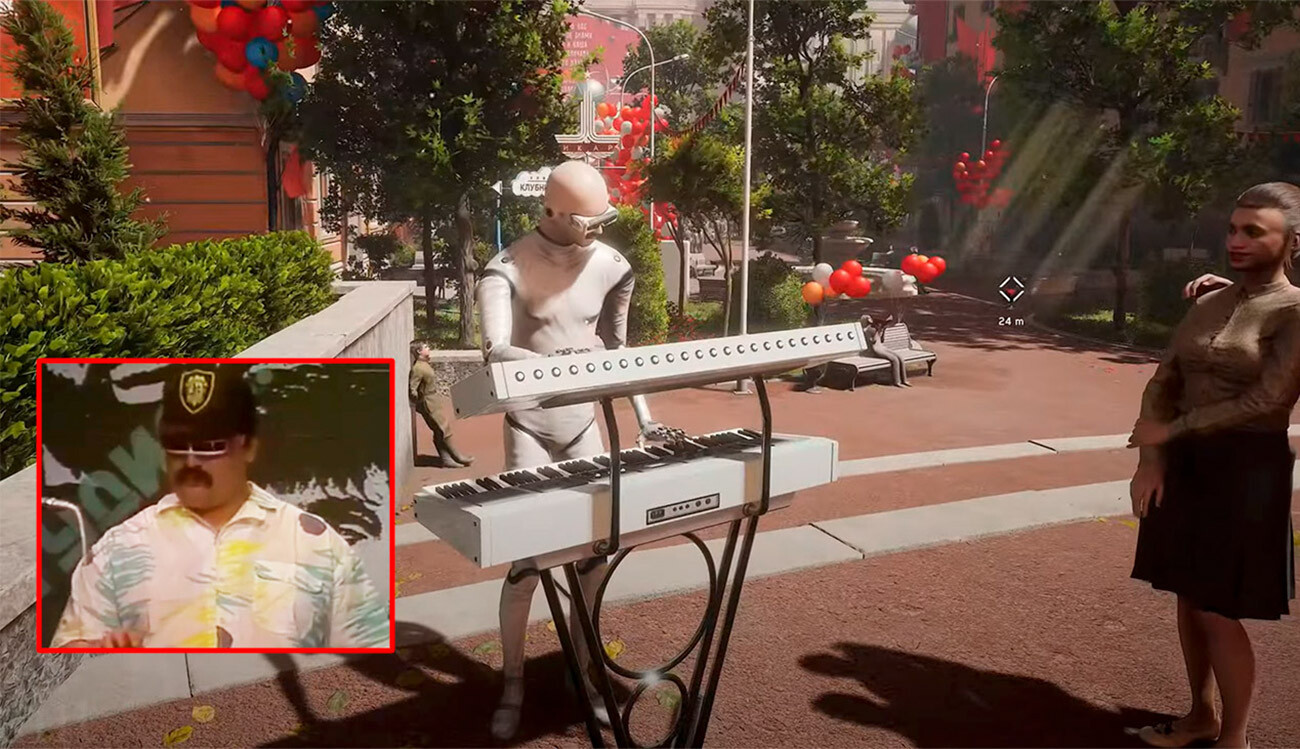
The game’s soundtrack has already gone viral, with the most famous song being a phonk remix of ‘Komarovo’ (Music by Igor Nikolaev, lyrics by Mikhail Tanich), a huge hit by Igor Sklyar (1985). The robot playing this song at the synthesizer looks like Oleg Parastaev (1958-2020), the keyboard player of the band ‘Alyans’, who appears in the music video ‘At Dawn’ wearing the same sunglasses.
The game also contains two references to the 1990s Russian rock band ‘Korol i Shut’ (‘King and Jester’), which became iconic after the death of its lead singer, Mikhail Gorshenev, in 2013. One of the in-game documents titled ‘Infiltrating the Object’ describes a certain M. Gorshenev, “an MSU student with a bare torso, disheveled hair and a guitar behind his back”, who came out from a patrol in the forest and telling a story – and what follows is a rough reiteration of the plot of the ‘Korol i Shut’s’ song ‘Lesnik’. At the same time, the song itself is not included in the game’s official soundtrack.
The second Easter egg associated with the band is simpler: the name of one of the missions – ‘In an overgrown park’ – is the first line of the ‘Korol i Shut’ song ‘The Cursed Old House’.
Dear readers,
Our website and social media accounts are under threat of being restricted or banned, due to the current circumstances. So, to keep up with our latest content, simply do the following:
If using any of Russia Beyond's content, partly or in full, always provide an active hyperlink to the original material.
Subscribe
to our newsletter!
Get the week's best stories straight to your inbox